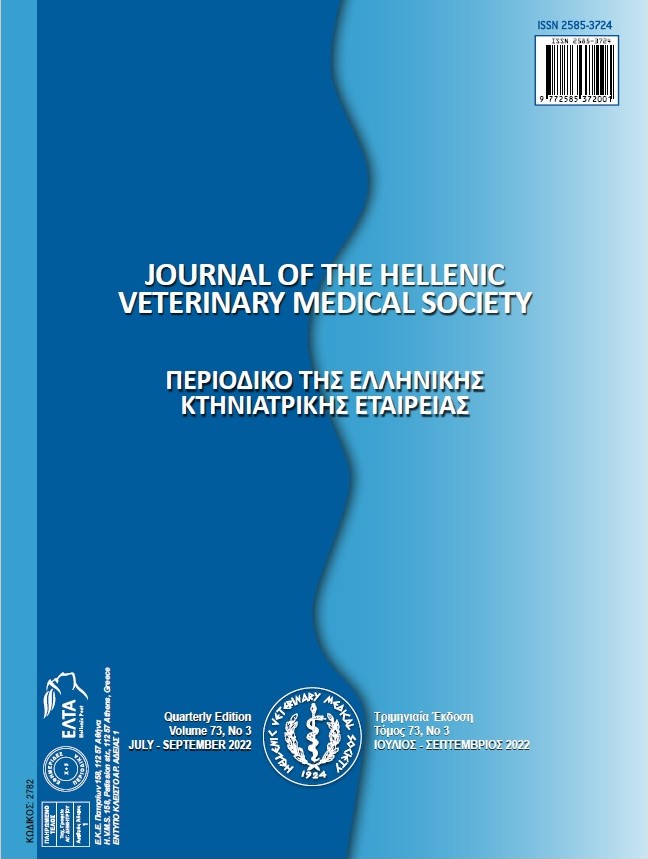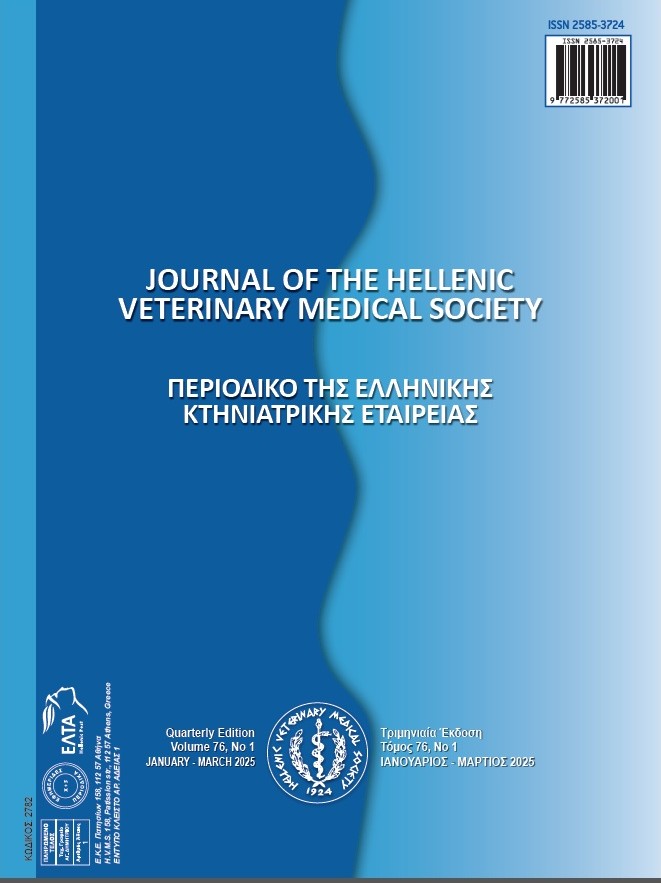Clinicopathological and biochemical evaluation of Feline Infectious Peritonitis in Turkish Van cats

Abstract
This study was performed to investigate serum homocysteine and nitric oxide levels in cats with Feline Infectious Peritonitis and present some biochemical and pathological alterations related to the disease. The animal material of this study consisted of thirty Turkish Van Cats of different ages and genders that were definitely diagnosed with the disease by post-mortem examinations and immunohistochemistry. The control group consisted of 6 healthy Turkish Van Cats of different ages and genders that were brought for routine clinical examination. Cats in the study group had clinical findings such as loss of appetite, weight loss, high fever, fever not reduced despite antibiotics, jaundice, dehydration, vomiting, respiratory system symptoms, anemia, nervous findings, uveitis, and ascites. These cats were monitored and following the death, post-mortem examinations were performed and cases with a definitive diagnosis were included in the study. Among the cats consisting study group, while 25 had the dry form of the disease, 5 had wet form. According to the hematological results, there was a statistically significant reduction in platelet counts. The biochemical results showed statistically significant alterations that creatinine, aspartate aminotransferase, alkaline phosphatase, creatine kinase myocardial band, homocysteine, and nitric oxide concentrations were higher than the control group. Besides albumin concentrations were lower and the albumin/globulin ratio was 0.53. As a result; this is the first detailed study in Turkish Van Cats with Feline Infectious Peritonitis that evaluated clinical, hematological, biochemical, and pathological findings. Furthermore, serum homocysteine and nitric oxide levels were evaluated for the first time in cats with vasculitis which is the most important complication of the disease. It is concluded that the evaluation of serum homocysteine and nitric oxide concentrations in Feline Infectious Peritonitis may assist the antemortem diagnosis of the disease.
Article Details
- How to Cite
-
Özbek, M., Özkan, C., Kaya, A., Yıldırım, S., Kozat, S., & Akgül, Y. (2022). Clinicopathological and biochemical evaluation of Feline Infectious Peritonitis in Turkish Van cats . Journal of the Hellenic Veterinary Medical Society, 73(3), 4379–4388. https://doi.org/10.12681/jhvms.27159
- Issue
- Vol. 73 No. 3 (2022)
- Section
- Research Articles

This work is licensed under a Creative Commons Attribution-NonCommercial 4.0 International License.
Authors who publish with this journal agree to the following terms:
· Authors retain copyright and grant the journal right of first publication with the work simultaneously licensed under a Creative Commons Attribution Non-Commercial License that allows others to share the work with an acknowledgement of the work's authorship and initial publication in this journal.
· Authors are able to enter into separate, additional contractual arrangements for the non-exclusive distribution of the journal's published version of the work (e.g. post it to an institutional repository or publish it in a book), with an acknowledgement of its initial publication in this journal.
· Authors are permitted and encouraged to post their work online (preferably in institutional repositories or on their website) prior to and during the submission process, as it can lead to productive exchanges, as well as earlier and greater citation of published work.





